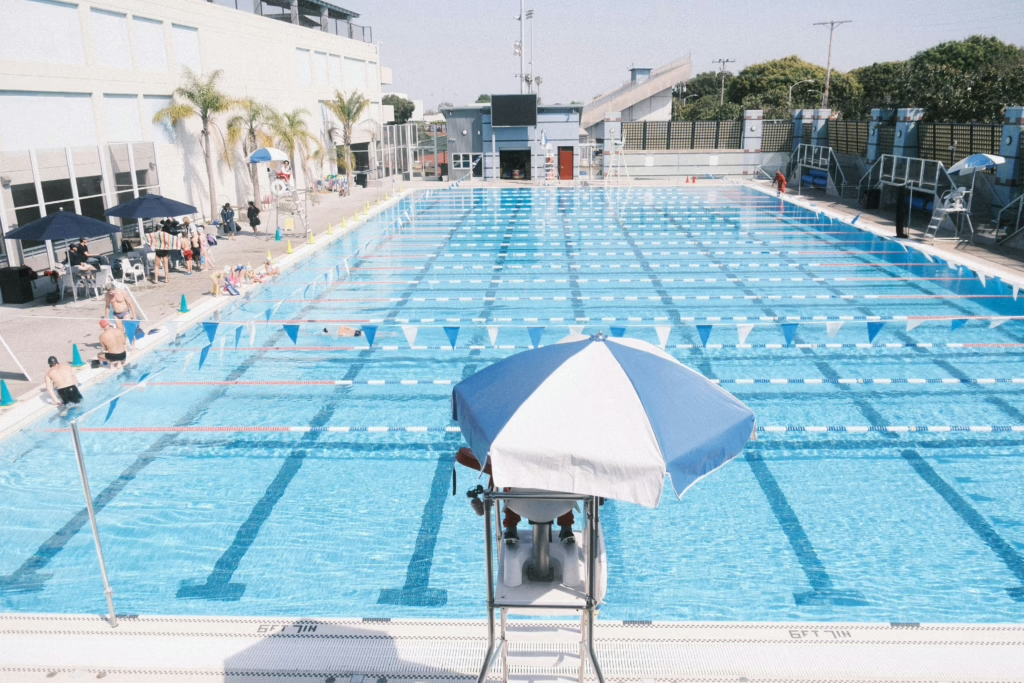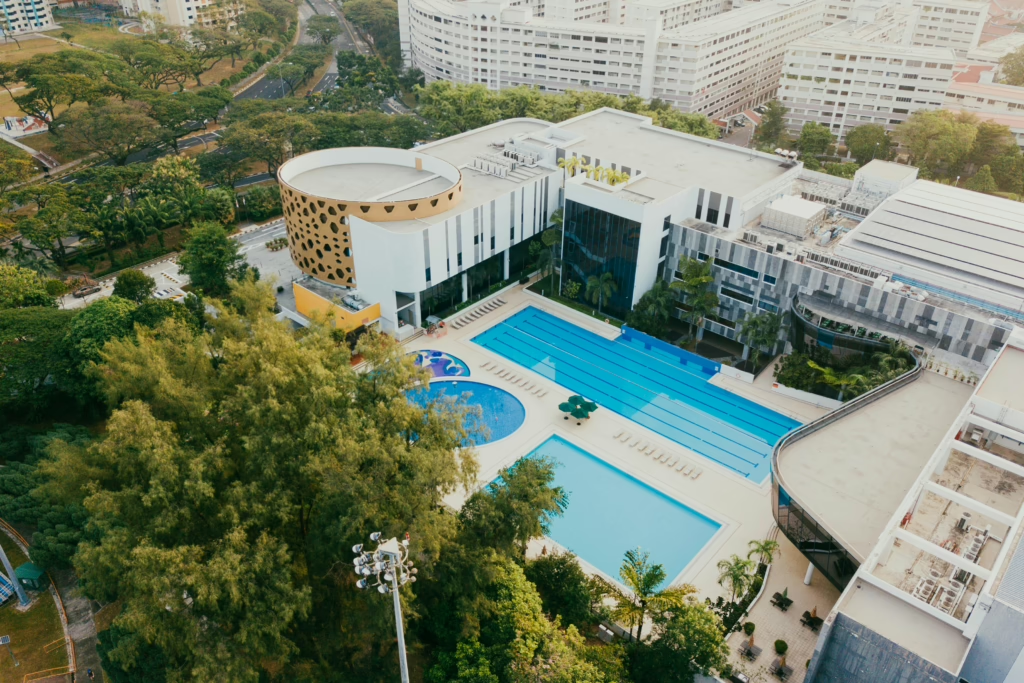San Diego’s sunny weather and active outdoor lifestyle make pools a staple for many homeowners. However, maintaining a pool in this vibrant city comes with challenges, from managing high evaporation rates to ensuring energy-efficient operation. This is where pool automation systems shine.
These advanced systems simplify maintenance, enhance convenience, and maximize efficiency, making them an essential upgrade for pool owners. If you’re considering a “pool automation system installation near me,” here’s why it’s a smart investment for San Diego homeowners.
Time-Saving Convenience
Maintaining a pool manually can be time-consuming, especially with the frequent use typical of San Diego’s warm climate. Pool automation systems streamline this process by automating essential tasks like cleaning, chemical balancing, and filtration.
By automating these routines, homeowners can eliminate the hassle of testing water chemistry daily or manually operating cleaning equipment. Advanced systems continuously monitor water conditions and adjust chemical levels as needed, ensuring your pool is always swim-ready. This time-saving convenience is particularly valuable for busy families and professionals who want to enjoy their pool more than maintain it.
Automation also benefits seasonal pool owners, who may only use their pools during certain months. Systems can maintain water quality and equipment functionality even when the pool isn’t in use, ensuring a smooth start when the swimming season begins.
Energy and Cost Efficiency
With San Diego’s abundant sunshine and mild temperatures, energy efficiency is a priority for pool owners. Pool automation systems optimize equipment operation, reducing energy consumption and lowering utility bills.
One of the key features of automation is smart scheduling. Systems can be programmed to run pumps and heaters during off-peak electricity hours, minimizing energy costs. Many systems integrate seamlessly with solar heating setups, allowing homeowners to harness renewable energy to maintain comfortable water temperatures. By combining automation with eco-friendly technologies, pool owners can significantly reduce their carbon footprint while saving money.
Variable-speed pumps controlled by automation systems further enhance energy efficiency. Unlike traditional single-speed pumps, variable-speed pumps adjust their power based on the task, such as filtration or heating. This precise control reduces energy waste and extends the lifespan of the equipment, providing long-term savings.
Improved Water Quality
Maintaining clean and balanced water is crucial for your pool’s health and swimmers’ safety. Pool automation systems excel in this area by providing real-time monitoring and adjustments to water chemistry.
These systems use sensors to track parameters like pH, chlorine levels, and temperature. When an imbalance is detected, the system dispenses the necessary chemicals to restore balance. This proactive approach prevents algae growth or cloudy water, ensuring a pristine swimming environment. With automation, San Diego pool owners can enjoy crystal-clear water year-round with minimal effort.
In addition to monitoring chemical levels, automation systems also optimize filtration cycles. By running the filtration system at the correct times and for the appropriate duration, these systems keep debris and contaminants out of your pool while minimizing wear on the equipment. This not only ensures cleaner water but also reduces maintenance costs over time.
Enhanced Poolside Experience
Pool automation systems simplify maintenance and enhance the overall poolside experience. With dynamic lighting controls, homeowners can create the perfect ambiance for any occasion, whether a relaxing evening swim or a lively pool party.
Additionally, automation systems allow for seamless control of water features such as fountains, waterfalls, and spa jets. These features can be activated remotely through a mobile app, giving you complete control over your pool’s functionality from anywhere. This level of convenience transforms your pool into a personalized oasis that suits your lifestyle.
Advanced automation systems integrate with smart home platforms like Alexa, Google Home, or Apple HomeKit. Imagine adjusting your pool’s temperature or lighting with a simple voice command. This integration not only adds convenience but also elevates the luxury of owning a pool in San Diego.
Environmental Benefits
In a city like San Diego, where water conservation is a key concern, pool automation systems offer significant environmental advantages. By integrating with pool covers, automation systems help reduce water evaporation, a common issue in warm climates. Some systems also include smart water level monitoring, which ensures the pool is refilled only when necessary, avoiding unnecessary water waste.
Furthermore, automation systems’ energy-efficient features reduce electricity consumption, making your pool more sustainable. From using variable-speed pumps to integrating solar power, these systems align with San Diego’s emphasis on environmental responsibility.
Automation systems also reduce chemical waste. By precisely dosing chemicals based on real-time water conditions, these systems minimize the overuse of chlorine and other products, ensuring that your pool remains environmentally friendly while maintaining optimal water quality.
FAQ: Pool Automation System Installation Near Me
1. What is a pool automation system?
A pool automation system is a centralized platform that integrates your pool’s equipment into one cohesive control system, such as pumps, heaters, lights, and cleaning systems. Using a mobile app, control panel, or smart home integration, pool automation systems allow you to automate and manage routine maintenance tasks and customize settings to suit your preferences.
2. How much does pool automation system installation cost?
Installing a pool automation system typically ranges from $1,500 to $5,000, depending on the complexity of your pool’s setup and the features included in the system. Advanced systems with extensive customization options or equipment upgrades may increase the overall cost. A professional assessment can provide a more accurate estimate tailored to your needs.
3. What features can be automated in a pool?
Automation systems can manage a variety of pool features, including:
Filtration and Circulation: For energy efficiency and water cleanliness, schedule your pump to run optimally.
- Heating and Cooling: Automatically maintain the desired water temperature.
- Lighting: Customize pool and landscape lighting for different moods or occasions.
- Cleaning Systems: Control robotic vacuums or skimmers to keep your pool debris-free.
- Chemical Balancing: Monitor and adjust pH, chlorine, and other water chemistry parameters.
- Water Features: Automate fountains, waterfalls, and spa jets for convenience and ambiance.
4. How does pool automation save money and energy?
Pool automation systems optimize equipment operation, reducing unnecessary energy use. For example, variable-speed pumps can run at lower speeds for filtration and higher speeds for cleaning, using less energy overall. Smart scheduling ensures equipment operates during off-peak electricity hours, lowering utility bills. Precise chemical monitoring minimizes the overuse of chemicals, reducing costs and environmental impact.
5. Can I install a pool automation system myself?
While some systems offer DIY installation options, professional installation is strongly recommended. Certified technicians ensure proper integration with your existing equipment, correct wiring, and compliance with safety standards. Professional installation also validates warranties offered by most manufacturers, protecting your investment.
6. What’s the best pool automation system for my pool?
The best system for your pool depends on factors like size, features, and your specific needs. Reputable brands like Hayward OmniLogic, Pentair IntelliTouch, and Jandy iAquaLink offer a range of systems tailored to different pool setups. Consulting a professional can help you select the ideal system for your requirements and ensure it’s configured for optimal performance.
7. How long does it take to install a pool automation system?
Installation typically takes between 4 and 8 hours, depending on the complexity of your pool’s equipment and the installed system. Larger or more intricate setups may require additional time. A professional installer will ensure a smooth and efficient process.
8. How do I control a pool automation system?
Most pool automation systems are controlled via a mobile app, tablet, or dedicated control panel. These interfaces are user-friendly and allow you to adjust settings, monitor water quality, and activate features remotely. Smart home integrations also enable voice commands for added convenience.
9. Can pool automation be integrated with smart home systems?
Many pool automation systems are compatible with smart home platforms like Amazon Alexa, Google Home, and Apple HomeKit. Integration allows you to control your pool alongside other smart devices in your home, offering a seamless and centralized user experience.
10. How often do I need to update my pool automation system?
Software updates are typically required annually or as needed to enhance functionality, security, and compatibility with new technologies. Check with your manufacturer or installer for specific recommendations. Professionals can assist with updates to ensure your system remains efficient and up-to-date.
Final Thoughts
Installing a pool automation system is a game-changer for San Diego homeowners. The benefits are extensive, from saving time and energy to enhancing water quality and reducing environmental impact. Automation allows you to enjoy a pristine, efficient, personalized pool experience year-round.
Ready to upgrade your pool? Contact PoolLogic San Diego today to explore the perfect pool automation system installation near you. Our experts are here to help you simplify maintenance and maximize enjoyment.



